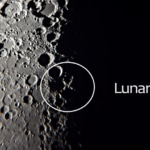Cool Facts About The Milky Way
The Milky Way isn't just the name of a candy bar -- it's also our own corner of the Universe. Check out these interesting facts.

The Milky Way is more than just the name of a candy made from chocolate-malt nougat topped with caramel and covered in milk chocolate. It’s also our own corner of the Universe.
The Milky Way is the popular name for the galaxy that contains our own solar system. On a dark clear night, we can see a portion of the Milky Way, in the form of a hazy band of white light spanning across the sky. Here are some interesting facts about our home galaxy:
- The Milky Way is a “barred spiral galaxy.” This means its basic shape is a spiral with a wide bar across the center. Approximately two-thirds of all spiral galaxies are barred.
- From our vantage point the center of the Milky Way (also its brightest portion) lies near the constellation Sagittarius. From there, it passes through Scorpius, Ara, Norma, Triangulum Australe, Circinus, Centaurus, Musca, Crux, Carina, Vela, Puppis, Canis Major, Monoceros, Orion, Gemini, Taurus, Auriga, Perseus, Andromeda, Cassiopeia, Cepheus and Lacerta, Cygnus, Vulpecula, Sagitta, Aquila, Ophiuchus, Scutum, and back to Sagittarius, dividing the night sky into two roughly equal hemispheres.
- The Milky Way is about 100,000 light years in diameter, 1,000 light years thick, and contains 200—400 billion stars and at least 50 billion planets. As many as 500 million of those planets could be habitable.
- The oldest known object in our galaxy is the star HE 1523-0901, estimated to be about 13.2 billion years old. This star is one of the oldest in the known Universe, making the Milky Way almost as old as the Universe.
- It takes our Sun about 250 million years to complete one orbit of the Milky Way. The Sun has completed about 20 orbits around the galaxy during its lifetime, and only 1/1250th of a revolution since human life began on Earth.
- The Milky Way got its name from the ancient Greeks, who believed that the bright patch in the sky was milk spilled by the goddess Hera when she was nursing the hero Hercules.
When Can You See It?
In the winter months, December through February, the Milky Way is not visible to us because it’s too close to the Sun. In the spring, March through May, it becomes visible a few hours before sunrise. During the summer months of June through August are the best times to view the Milky Way because it will be up most of the night. By fall, September through November, the Milky Way can be best seen in the evening, before it sets. Seek out dark skies, away from light pollution and twilight hours.

Jaime McLeod
Jaime McLeod is a longtime journalist who has written for a wide variety of newspapers, magazines, and websites, including MTV.com. She enjoys the outdoors, growing and eating organic food, and is interested in all aspects of natural wellness.






I remember the beautiful Milky Way in the night sky, but light pollution has robbed us of this pleasure.